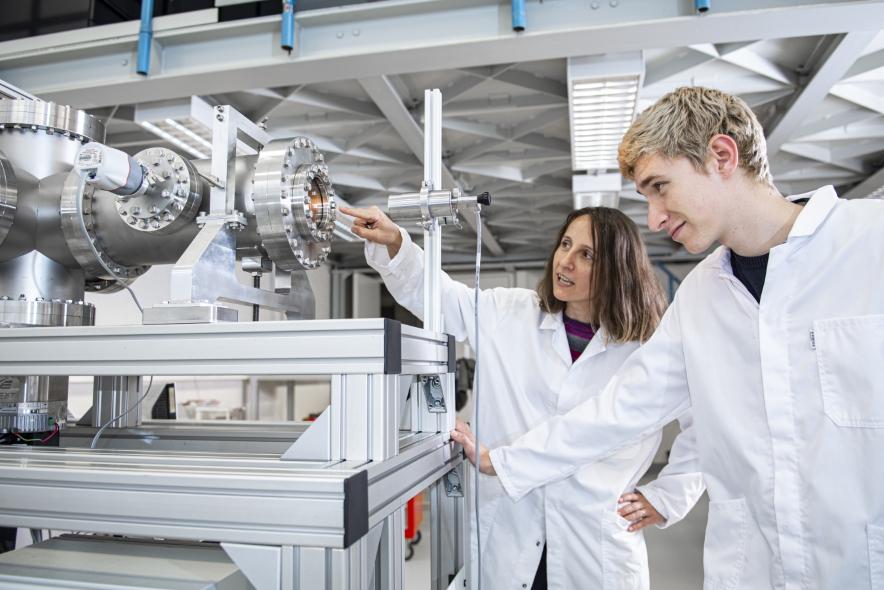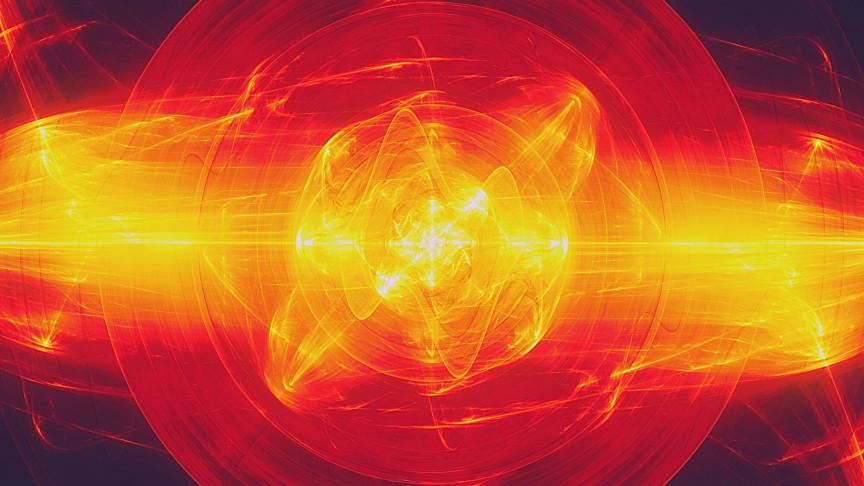Nuclear science
Fundamental physics research
In fundamental physics research, the search for ‘physics beyond the standard model’ is ongoing at existing large scale particle physics laboratories, but over the past decade it has become clear that major breakthroughs might come from high precision experiments at small scale facilities, among which radioactive ion beam facilities play a major role.
That is where the ISOL laboratory within MYRRHA's Proton Target Facility (PTF) comes in. In this so-called lab, it will be possible to produce intense high purity radioactive ion beams by using part of the proton beam. This creates extraordinary opportunities to achieve sufficiently-high statistics in precision experiments or to hunt for very rare phenomena.

ISOL@MYRRHA: Unravelling unseen opportunities
In the last decades, several ISOL (Isotope Separation On-Line) facilities have been built around the world with the initial goal to advance fundamental knowledge of the atomic nucleus. Due to the success of these facilities, demand for radioactive ion beams exceeds what most facilities can offer. Unfortunately, many facilities have had to limit the number of experiments or beam times available to scientists.
ISOL@MYRRHA's goal is to focus on experiments that require long periods of uninterrupted radioactive ion beams – a difficult, if not impossible act to perform in todays' existing facilities. These experiments need sufficient time in order to reach the required accuracy for their specific scientific goals.
Fusion reactor physics
As global demand for electricity is increasing, scientists are making steady progress in developing nuclear fusion reactors that will be driven by the sun’s power generation technology. Fusion reactors will generate energy with less high-level nuclear waste compared to the currently operating fission type reactors.
Developing fusion based reactors remains one of the biggest technological challenges of our times. Fusion takes place under extreme conditions within a confined environment with sufficient temperature, pressure and confinement time to create a plasma discharge. Therefore, delivering fusion technology on a commercial scale will rely on successful fusion materials research programs.

Nuclear fusion anno 2021
Materials for commercial fusion reactors will require qualification at high exposure fluence with fast spectrum and dedicated helium production to mimic fusion operational conditions. While the dedicated neutron sources are under development, the complementary fast spectrum reactor irradiation will become critical in 2030-2050, as the world is currently running out of fast research reactors.
The most advanced current research program ITER, aims at demonstrating fusion’s scientific and technological feasibility. In a next phase, it will be succeeded by DEMO, an electric power plant prototype. DEMO is then expected to lead to full-scale commercial fusion power stations. The development path will take several decades.
Fusion Material Research Program
MYRRHA as a fast neutron reactor will generate irradiation conditions close to those anticipated in DEMO, while sustaining high exposure flux. A dedicated fusion neutron channel at MYRRHA will contribute to the European programme of DEMO materials towards qualification as well as to post-irradiation examination (PIE) studies.
PIE investigations will be carried out by an international team of researchers at nuclear facilities from SCK CEN and other countries who already did or are willing to join the Fusion Material Research Program. These studies will involve a variety of interdisciplinary research including chemistry, physics, engineering and material production routes.
